Developments in young infants' reasoning about occluded objects
- PMID: 12528903
- PMCID: PMC4241364
- DOI: 10.1016/s0010-0285(02)00005-1
Developments in young infants' reasoning about occluded objects
Abstract
Eight experiments were conducted to examine 3- and 3.5-month-old infants' responses to occlusion events. The results revealed two developments, one in infants' knowledge of when objects should and should not be occluded and the other in infants' ability to posit additional objects to make sense of events that would otherwise violate their occlusion knowledge. The first development is that, beginning at about 3 months of age, infants expect an object to become temporarily visible when passing behind an occluder with an opening extending from its lower edge. The second development is that, beginning at about 3.5 months of age, infants generate a two-object explanation when shown a violation in which an object fails to become visible when passing behind an occluder with an opening in its lower edge. Unless given information contradicting such an explanation, infants infer that two identical objects are involved in the event, one traveling to the left and one to the right of the opening. These and related findings provide the basis for a model of young infants' responses to occlusion events; alternative models are also discussed.
Figures
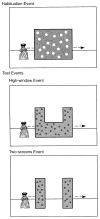
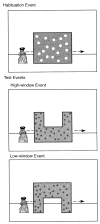

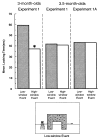
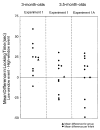
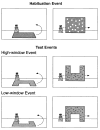
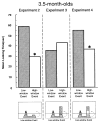
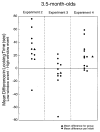
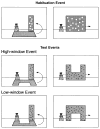
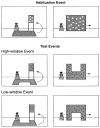
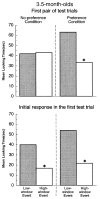
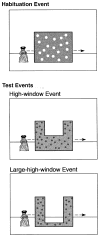
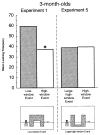
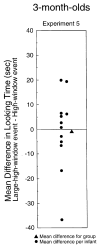
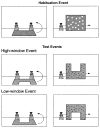
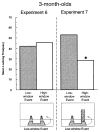
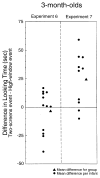

References
-
- Aguiar A. Infants’ problem solving: 6.5-month-olds’ performance in a means–end support task. Paper presented at the annual meeting of the Midwestern Psychological Association; Chicago, IL. 1997.
-
- Aguiar A, Baillargeon R. 8.5-month-old infants’ reasoning about containment events. Child Development. 1998;69:636–653. - PubMed
-
- Aguiar A, Baillargeon R. 2.5-month-old infants’ reasoning about when objects should and should not be occluded. Cognitive Psychology. 1999;39:116–157. - PubMed
-
- Aguiar A, Baillargeon R. Perseveration and problem solving in infancy. In: Reese HW, editor. Advances in child development and behavior. Vol. 27. San Diego: Academic Press; 2000. pp. 135–180. - PubMed
-
- Aguiar A, Kolstad V, Baillargeon R, Menard K. Why do young infants fail means-end tasks? 2002. Manuscript in preparation.
Publication types
MeSH terms
Grants and funding
LinkOut - more resources
Full Text Sources
Medical

